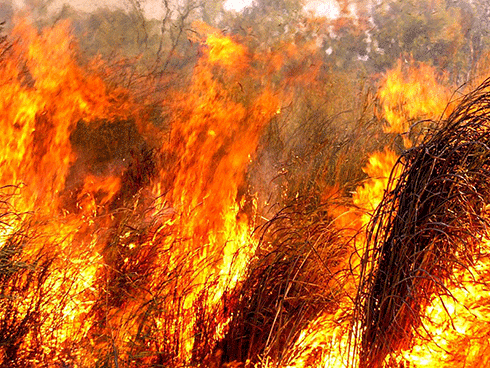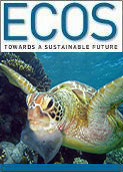
|
Published: 19 August 2013
Weeds threaten carbon offsets from strategic burning
Gamba grass and other invasive weeds pose a threat to landholder involvement in environmental offset programs such as the Carbon Farming Initiative, according to new research from the Northern Australia Hub of the National Environmental Research Program (NERP).
Strategic savanna burning has been proposed as a means of reducing Australia’s carbon emissions and creating new markets in northern Australia, but the increased fuel load and emissions from weed infestations could make it unfeasible, according to the recent research paper.
Author Dr Vanessa Adams says that late dry season wildfires in Australia’s tropical north generate about 3 per cent of the country’s annual greenhouse gas emissions, so strategic burning could be an important abatement activity.
‘But when native savannas are invaded by weeds such as gamba grass, fuel loads are dramatically increased and fires can burn up to five times hotter than a native wildfire,’ Dr Adams said.
‘We examined the spatial and financial extent of the threat of gamba grass and found that 75 per cent of the area across northern Australia suitable for savanna burning is also highly suitable for gamba grass.
‘There’s a large disparity between the profits generated from savanna burning – $1.92 per hectare – and the costs of managing gamba grass – $40 per hectare – meaning that much more savanna needs to be enrolled for carbon farming to cover the costs of weed eradication.
‘The good news is that in the Northern Territory, only about 20 per cent of properties that could run profitable savanna burning programs had gamba grass, and of these, about 16 per cent had small infestations.
‘A one-off investment of $200 000 would eradicate these infestations, and for the majority of properties that are gamba free, an effective control program would safeguard them into the future.
‘It’s really important we look at how these types of barriers might prevent landholders from getting involved in environmental offset programs and that we strategically manage weeds so that they don’t become an intractable problem in the future.’
Source: NERP




